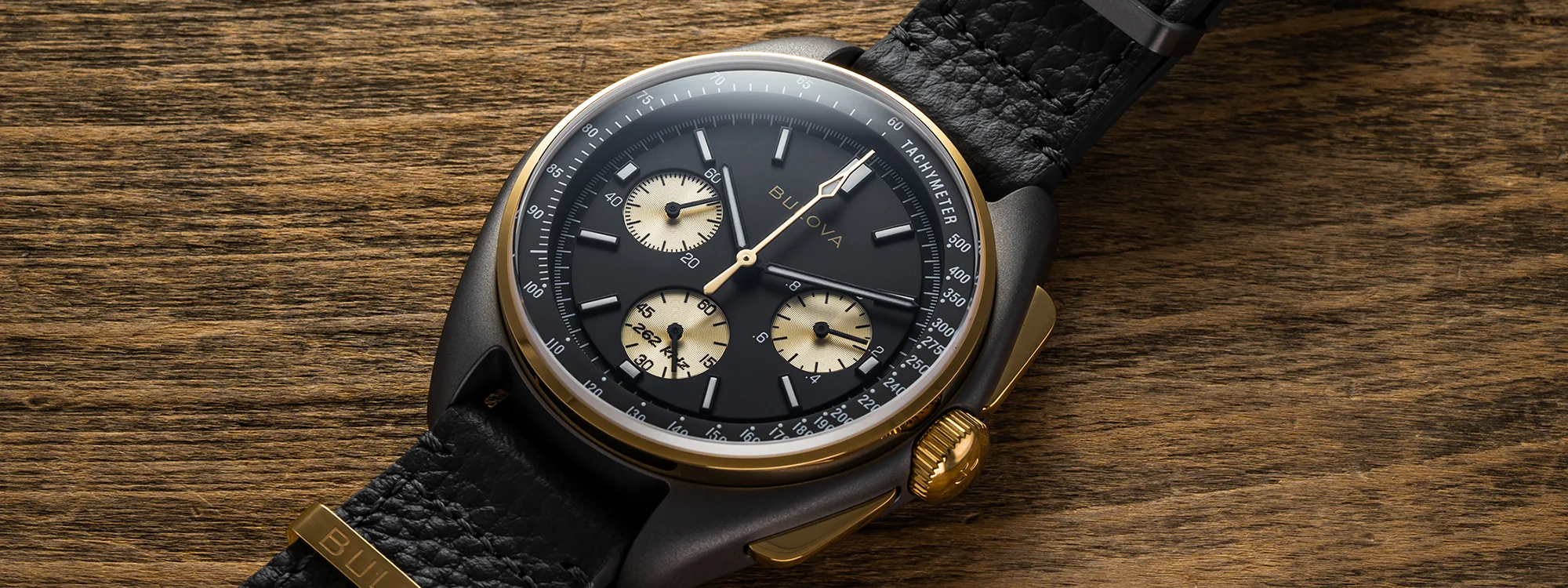In the world of horology, where tradition and craftsmanship reign supreme, the advent of quartz watch movements in the 20th century sparked a revolution that forever altered the landscape of timekeeping. While mechanical watches had dominated the industry for centuries, the introduction of quartz technology offered a level of precision, affordability, and reliability that had never been seen before. This game-changing innovation quickly gained traction, becoming the preferred choice for many watchmakers and consumers alike.
In this article, we will explore the rise of quartz watch movements, their impact on the watch industry, and why they continue to be a popular option in modern horology. We will also examine the technical aspects of quartz movements and the reasons they remain a symbol of precision and affordability.
The Quartz Revolution: A Brief History
The history of quartz watch movements dates back to the late 1960s, a period often referred to as the “Quartz Revolution” or “Quartz Crisis,” depending on one’s perspective. Prior to this time, mechanical watches dominated the market. These intricate timepieces, powered by hand-wound or automatic mechanical movements, were valued for their craftsmanship and artistry. However, they had a few limitations, most notably their susceptibility to losing or gaining several minutes per day.
The invention of quartz technology changed everything. In 1969, Japanese watchmaker Seiko introduced the world’s first quartz wristwatch, the Seiko Astron. This timepiece used a small quartz crystal to regulate its movement, resulting in unprecedented accuracy. Seiko’s breakthrough disrupted the traditional watch industry, especially in Switzerland, where mechanical watches had long been the standard.
The shift to quartz watches was swift and widespread. Within a few years, quartz watches became the dominant force in the market, thanks to their precision, ease of use, and significantly lower production costs. The Quartz Revolution also ushered in the era of mass-produced watches, allowing consumers to own reliable timepieces at affordable prices.
How Quartz Watch Movements Work
To understand why quartz watch movements became so popular, it’s important to delve into how they function. At the core of quartz watch is a small piece of quartz crystal, typically cut into the shape of a tuning fork. Quartz is a unique mineral with piezoelectric properties, meaning that when an electric charge is applied to it, the crystal vibrates at a precise frequency.
In a quartz watch, a battery sends an electrical current through the quartz crystal, causing it to oscillate at an incredibly stable frequency of 32,768 times per second. This steady vibration is then measured and converted into electrical pulses, which are used to drive the watch’s hands or digital display.
This method of timekeeping is far more accurate than mechanical watches, which rely on the oscillation of a balance wheel and escapement. While mechanical watches can lose or gain several minutes per day due to factors like temperature, position, and wear, quartz watches typically loss or gain only a few seconds per month. This extraordinary level of accuracy made quartz watches a hit with consumers who valued precision and reliability.
The Benefits of Quartz Watch Movements
One of the key reasons for the widespread adoption of quartz watch movements is their numerous benefits over traditional mechanical movements. Here are some of the main advantages:
1. Unparalleled Precision
The most significant advantage of quartz watches is their accuracy. As mentioned earlier, the quartz crystal vibrates at a consistent frequency, which ensures precise timekeeping. While mechanical watches can drift by several minutes per day, quartz watches remain accurate to within a few seconds per month. For many people, this level of precision is invaluable, especially in professional or technical settings where exact time is crucial.
2. Affordability
In addition to their precision, quartz watches are far more affordable than their mechanical counterparts. The production of quartz watch movements is less labor-intensive and does not require the same level of craftsmanship as mechanical movements. This allows manufacturers to produce quartz watches at a lower cost, making them accessible to a broader range of consumers.
Even luxury watch brands, such as TAG Heuer and Omega, offer quartz models at more affordable price points than their mechanical offerings. For individuals who want the prestige of a luxury brand without the high price tag, a quartz watch is often an attractive option.
3. Low Maintenance
Quartz watches require very little maintenance compared to mechanical watches. Mechanical timepieces often need regular servicing, lubrication, and adjustments to ensure they function correctly. On the other hand, quartz watches are powered by batteries, which typically last two to five years, depending on the model. When the battery dies, it’s simply replaced, and the watch continues to function as accurately as before.
This low-maintenance nature makes quartz watches ideal for individuals who want a reliable timepiece without the hassle of regular upkeep.
4. Durability
Quartz watches are also known for their durability. The absence of intricate moving parts, like those found in mechanical movements, means that quartz watches are less prone to damage from shocks and vibrations. This durability makes them a great choice for people with active lifestyles or those who wear their watches in challenging environments.
Many quartz watches are also built with water resistance and rugged designs, making them suitable for sports, diving, and other outdoor activities.
Quartz Watch Movements in Modern Horology
While quartz watch movements revolutionized the watch industry in the 20th century, they continue to play a significant role in modern horology. Today, quartz watches are available in a wide variety of styles and price ranges, from affordable everyday watches to high-end luxury models.
Quartz in Luxury Watches
Although mechanical watches remain a hallmark of luxury brands, many high-end watchmakers also offer quartz models. Brands like Cartier, Omega, and TAG Heuer have produced quartz versions of their iconic watches, catering to consumers who desire the prestige of a luxury watch with the accuracy and convenience of quartz technology.
One of the reasons luxury brands still produce quartz watches is their appeal to women’s watch collections. Due to their smaller size and slim profile, quartz movements are often used in women’s watches, allowing for elegant and compact designs.
Quartz in Digital Watches
Another significant contribution of quartz watch movements is their integration into digital watches. Digital quartz watches, which display time on an LCD or LED screen, have become incredibly popular due to their ease of use and functionality. Brands like Casio and Timex have pioneered the digital watch market, offering watches with multiple features such as alarms, stopwatches, and even GPS technology.
Digital quartz watches are favored by athletes, outdoor enthusiasts, and tech-savvy individuals who require a watch that offers more than just timekeeping.
The Hybrid Era: Quartz and Smart watches
In recent years, quartz watches movements have also found their place in hybrid smart watches, which combine the traditional look of an analog watch with the functionality of a smart watch. These hybrid watches are powered by quartz movements but feature smart capabilities like fitness tracking, notifications, and Bluetooth connectivity.
This fusion of classic watch design and modern technology has expanded the versatility of quartz watches, making them appealing to a new generation of consumers.
The Quartz Crisis: A Turning Point in the Watch Industry
While the Quartz Revolution brought about many benefits, it also caused a major disruption in the traditional watch industry, particularly in Switzerland, where mechanical watchmaking had long been the cornerstone of horology. The rise of quartz watches led to the decline of many Swiss watchmakers, as they struggled to compete with the precision and affordability of quartz technology.
This period, known as the “Quartz Crisis,” saw a significant reduction in the number of Swiss watch manufacturers. However, it also sparked innovation within the industry, prompting Swiss brands to focus on the artistry and craftsmanship of mechanical watches, while also incorporating quartz technology into their collections.
Today, both quartz and mechanical watches coexist in the market, each offering unique advantages to consumers. While quartz watches dominate in terms of precision and affordability, mechanical watches remain prized for their craftsmanship and tradition.
Conclusion
The rise of quartz watch movements revolutionized the watch industry, offering an unprecedented combination of precision, affordability, and convenience. By harnessing the piezoelectric properties of quartz crystals, these watches transformed the way people keep time, making accurate and reliable timepieces accessible to the masses.
Whether you’re looking for an affordable everyday watch, a high-end luxury timepiece, or a feature-packed digital watch, quartz watch movements continue to provide a level of reliability and versatility that remains unmatched in modern horology. As technology advances and new innovations emerge, quartz watches will undoubtedly continue to evolve, maintaining their status as a symbol of precision and practicality.
Stay in touch to get more news & updates on Gossips.Blog!




